Yu-Gi-Oh! started life as a manga in 1996, and it became a big hit with the youth of Japan due to its darker tones and use of a trading card game as a means of combat. Like anything that finds a large audience, the popularity of the manga created an anime and video games — and finally, the real trading card game. Yu-Gi-Oh! hit North America with the anime followed by everything else, and while this should've meant a wealth of games for everyone, plenty of the games stayed in Japan. One year before the 30th anniversary of the franchise, Konami has released Yu-Gi-Oh! Early Days Collection to bring together a large swath of games, including titles that are officially being released in North America for the first time.
Right off the bat, the compilation elicits a mix of different feelings. There are 14 titles included, but none of the home console entries are represented since the package focuses on games released on Nintendo's portable consoles (Game Boy, Game Boy Advance and Game Boy Color). Each game has the entries from every region it released in, with a majority of the titles getting official English translations for the first time. You'll find some titles that received both Game Boy and Game Boy Color iterations in Japan, while it was only a Game Boy Color title elsewhere. The instruction books have all been translated, but they feel incomplete since not all of the games or versions include deconstructed box art, and some languages have mistranslated pages. The 3D box art in the game selection menu can't be rotated, and there are no extras, such as images of the free trading cards that were included with most of the games. One feature that players will appreciate is the presence of cheats, especially since some of the games feel almost impossible to complete without them.
The games in the compilation can be split into three different camps. The Duel Monsters line is most represented, as all nine titles are present. The first is the titular Duel Monsters, which presents the card game in a very simplified form. You start off with a basic Starter Deck containing 33 monsters and seven magic cards, with the former being randomly selected from a pool of 100, and additional cards can be obtained when you defeat enemies. Turns have you placing cards on the field, and battles are simplified because the monster with the highest attack power wins. Any leftover attack power from the fight is applied to the opposing person's overall life meter, and draining that to zero wins the match. There is some nuance in that you can place a monster in a defensive position, so even if they die, the extra attack power doesn't get transferred to the opposing player. In total, the game contains 365 cards with 315 monsters and 50 spells available. There are seven stages, with each stage containing multiple enemies that need to be defeated before you can progress. Considering that this title predates the physical card game, this is likely the simplest version you'll encounter.
The simplicity doesn't mean that the game is instinctively easy to understand. There's no tutorial at all, so reading the instruction book is essential if you want to know what you're doing in the Duel Monsters line. This is fine, but the negative is in the actual gameplay. In particular, the game forces you to defeat every person five times before you can move on to the next stage, and there's no counter to let you know that you've reached the required number of wins. This is bad in the first stage, where there are four people, but it becomes ludicrous in the second stage, which features nine players. To make matters worse, the game always kicks you back to the title screen once a battle ends. This transforms the game into an absolute slog that provides no motivation to keep playing once you know about this requirement.
Duel Monsters II: Dark Duel Stories does what every sequel is supposed to do by amplifying the gameplay features that already worked. The total number of cards in the game is 720. Trap and Ritual cards are now a thing, and you can now perform monster Fusions to create new creatures. This is a good step in making the video games closely emulate the real card game, but this title still commits the same sins as the first game. You'll always get booted to the title screen at the end of every fight, and you'll still need to beat everyone a minimum of five times before moving on. The game also regresses a bit in that you have to manually end your turn instead of having the game do it for you, so each encounter feels much slower to work through.
Dark Duel Stories is the third game in the sub-series but the first to officially go outside of Japan. While it contains the same strengths and weaknesses as the previous game, there are a few new features to appreciate. The first is the ability to craft your own cards if you have a top and bottom half in your possession. The second is the ability to add your physical cards into the game via an eight-digit code, provided you're using a card that was available at the time of this title's release. The most significant change is that card alignment now matters. Certain aligned cards can beat others instantly, regardless of attack or defensive power numbers. It complicates the game greatly but adds some strategy to bring this in line with the physical game.
Duel Monsters 4: Battle of the Great Duelist changes absolutely nothing good or bad from the previous games. The only significant update is that, like many portable games from the era, the game is split into three distinct versions that provide a specific starting deck depending on your player (Yugi, Kaiba or Joey/Jonouchi). This feature gives this game the distinct honor of being the only game in the package to feature a working multiplayer mode. This feels like something that few people will bother to use, since so many other online-capable Yu-Gi-Oh! games already exist on most platforms.
The Eternal Duelist is the fifth game in this line, and this is where the gameplay finally starts to change. Instead of being given a randomized deck, you can choose between decks of three different colors that are still randomized. Booster packs are also present, so beating opponents isn't the only way to get more cards. While you still need to defeat opponents multiple times before you can move on, the number of wins isn't as strict as in previous games. While some opponents still need to be beaten five times, others only need to be defeated two or three times before you can advance. Those are the only changes aside from the increase in total card numbers, but it's enough to keep the series from feeling stale.
Worldwide Edition: Stairway to the Destined Duel is the international version of Duel Monsters 6: Expert 2, and this is where the game really changes up the progression. Gone is the set lineup of foes you need to defeat multiple times; it's replaced with an overworld map that has both opponents and tournaments. It makes the game feel a bit livelier, even if the battles still feel rather long.
The Sacred Cards represents the seventh game in the series, and while it does a good job of retaining the pseudo-RPG gameplay from the previous game, it also tries to go backward in the card-based gameplay. Fusions and the act of Polymerization are gone, for example. It's fine, but the regression of some rules hurts. Reshef of Destruction represents the eighth and final game of the Duel Monsters line. It's more of a direct continuation of the seventh game, The Sacred Cards, but you're getting a much longer story and a higher level of overall difficulty. While you aren't getting a major change in gameplay mechanics, you are getting one tweak in the form of some monster effects that last longer than one round, and this change impacts the strategy quite a bit. Overall, this game and the previous two titles in the series do a good job of ending this line of games on a higher note, since there's a semblance of a story rather than just endless and repetitive fights.
There is one final inclusion that doesn't make much sense, and that is the original sixth game, Duel Monsters 6: Expert 2, in addition to the international version that we had previously mentioned, Worldwide Edition: Stairway to the Destined Duel. Having both versions is nice for those who want to do a deep dive to see if there are any differences between the two games. However, this game is completely in Japanese and is unplayable unless you know the language. It's also odd to see it in untranslated form, since the instruction book has been translated into English. For those outside of Japan, having this game only takes up space and artificially bumps up the game count when this could've been placed under the listing for Stairway to the Destined Duel, since the package features a version selector to handle the various region versions.
The World Championship series is next, but there are only two entries. The first is World Championship Tournament 2004, and it adheres fairly closely to the rules of the trading card game. It also mimics the style of a fighting game, so you select an opponent and go straight into battle. Defeating opponents opens up a new set of foes. It's a completely straightforward affair that works well to satisfy fans who just want battles without resorting to the needless grind of the early Duel Monsters games.
The other game in the World Championship series is 7 Trials to Glory: World Championship Tournament 2005. While the battle system from the 2004 iteration is still present, the campaign gets a major overhaul. Gone is the fighting game-like system, which has been replaced with a location-based world where you enter tournaments or go up to random characters and animals to initiate duels. Winning yields points, which you can invest into starter packs or booster packs to craft stronger decks and challenge more advanced opponents on your way to the Survival Tournament, the grand finale. Like the previous game, this is quite good once you come to grips with the rules, and it satisfies players looking for a solid single-player campaign without a major story arc.
The final three games in the package don't belong to any specific category, but they are distinctive. Yu-Gi-Oh! Monster Capsule GB is the first, and it was a shame that this was restricted to Japan only since the concept is quite good. This is a strategy game where you can place up to four monsters on a board and engage in turn-based battles to defeat your opposition. Once you decide to attack your foe, you're given a percentage threshold for that attack, and as long as your two 10-sided dice create a percentage lower than that, your attack will go through. The system is neat, but it runs into a few issues like the early Duel Monster games. First, there is no tutorial or explanation for what's going on, so you'll be utterly confused about what's going on with the dice, especially since the instruction book doesn't mention the dice either. Second, the game is an absolute grind since your coins govern everything. You win a coin from defeating an enemy, and those coins can be used in the capsule machines to get more monsters. However, you need to spend those same coins to unlock the door for the boss fight. What starts off as a neat twist to the normal card battles quickly becomes a chore due to the limited resources to upgrade, add to your army, and progress. The game suffers because it feels like it goes on for much longer than it should.
Dungeon Dice Monsters is next on the list, and it is an interesting one because it completely replaces cards with dice. You select two to three monsters on your turn and then roll three dice in hopes of getting two stars of the same level. This lets you summon a monster and unfurl a die to create a pathway to your opponent's avatar. The goal is to hit your opponent three times in a match to defeat them, and while this may seem random, it maintains some excitement since you can choose which dice are in your arsenal. It's an interesting diversion if you tire of the various card battling formats of the other games in the collection.
Finally, there's Destiny Board Traveler. The game goes for a board game motif, and while the box art may convince you that this is the franchise's equivalent to Mario Party, the game execution is very far from that. The board is a simple square, and your job is to place your monster cards on a die and then roll it to determine how many spaces you'll move and which monster you'll use in a fight. During that fight, another dice roll determines extra effects, like whether attack or defense attributes get swapped. A simple card battle ensues, and victory means being able to take over that space. Winning the game means having possession of the number of victory stars you've set the game to. The idea is simple, but the execution is terrible, especially since there's no multiplayer option. The strategy element is dumbed down greatly, and it's not satisfying because everything seems to come down to sheer luck. When compared to the other games in the collection, this is the one least likely to be played more than once.
The presentation of each game varies greatly due to the system specs that each game was aiming for, but there are a few constants. The Game Boy and Game Boy Color titles tend to look just fine when blown up to a bigger screen, but the Game Boy Advance titles tend to have their text and interface elements feel compressed, sometimes to the point of being illegible. The presence of VRT and Monitor filters is curious, since these were all portable games (one could make the argument that someone would've played them on the GBA adapter for the GameCube), while the LCD filter can be hit-and-miss, with some of the squares being oddly shaped when upscaled. Speaking of which, the game never goes beyond a 1920x1080 resolution, but that doesn't seem to affect the overall look much, even if you play the games on a 4K TV.
Considering the era of the games in this compilation, it should come as no surprise that the Steam Deck can handle the package very well. The collection displays in 1280x720, and the frame rate sticks to whatever each of the original games initially ran with. Using 7 Trials to Glory as the test game, a full charge can get you around five-and-a-half hours on the device, which isn't bad at all. Cloud saving is also present, so you can go between devices for each game and version with no issues. Be sure to change your cloud save settings, since that also gets saved to the cloud without taking into account device constraints.
Yu-Gi-Oh! Early Days Collection is for a very specific type of Yu-Gi-Oh! player who favors battles against the CPU instead of real people. That player also knows all of the rules of the game, wants a fixed set of cards, and doesn't want further updates from new cards. For them, most of the games in the compilation will be fine if they can get over each title's shortcomings. For everyone else, especially newcomers, the games are cumbersome and unintuitive, so only those with an immense amount of patience would want to give the titles a shot.
Score: 5.5/10
More articles about Yu-Gi-Oh! Early Days Collection


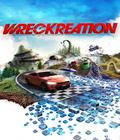


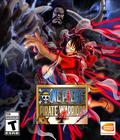
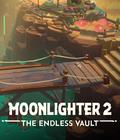
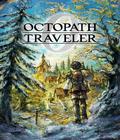
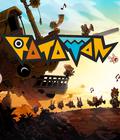
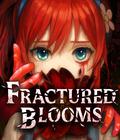

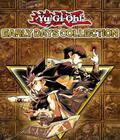 Yu-Gi-Oh! Early Days Collection is a new digital title in development, commemorating the 25th anniversary of the Yu-Gi-Oh! Card Game.
Yu-Gi-Oh! Early Days Collection is a new digital title in development, commemorating the 25th anniversary of the Yu-Gi-Oh! Card Game.